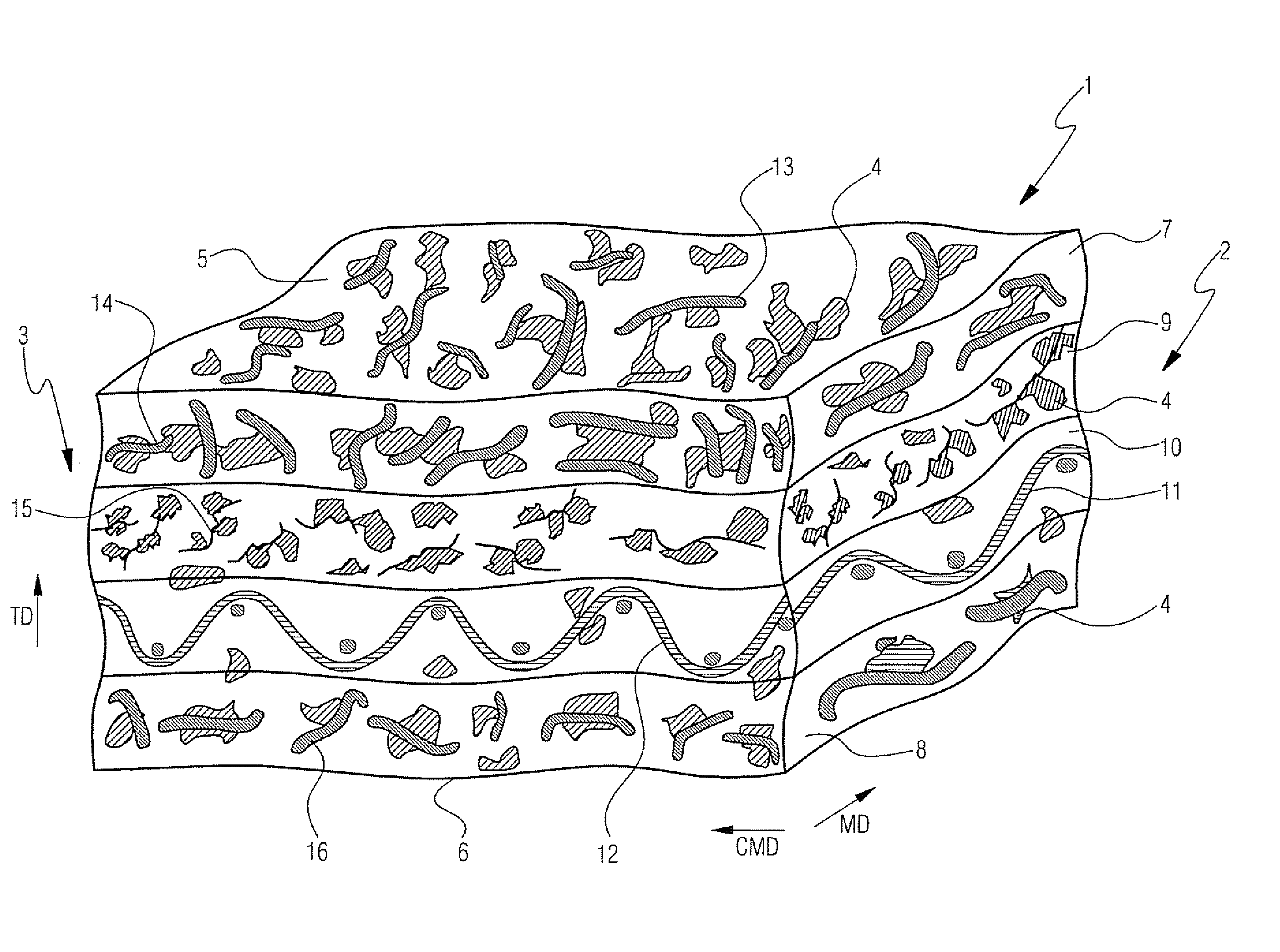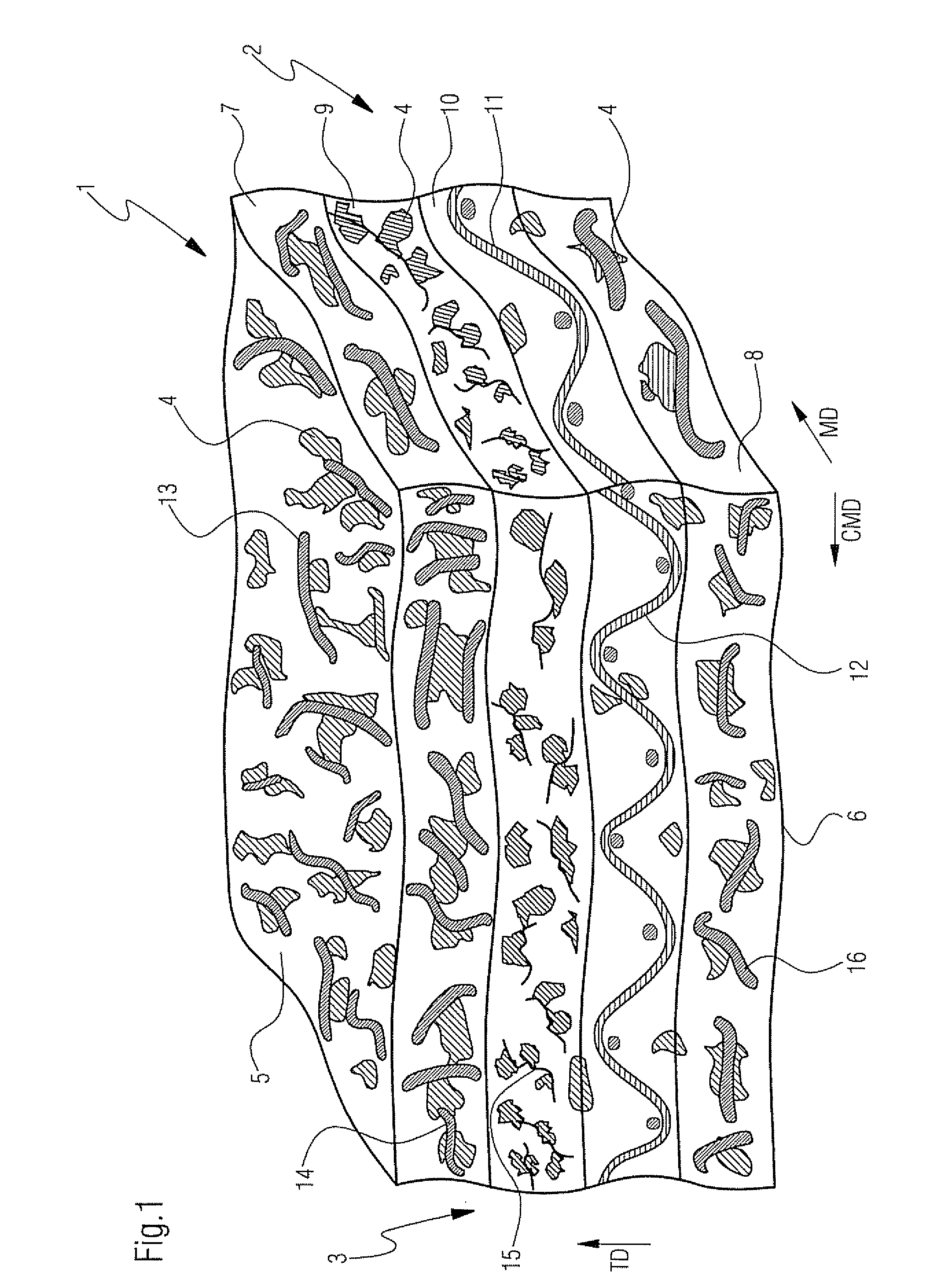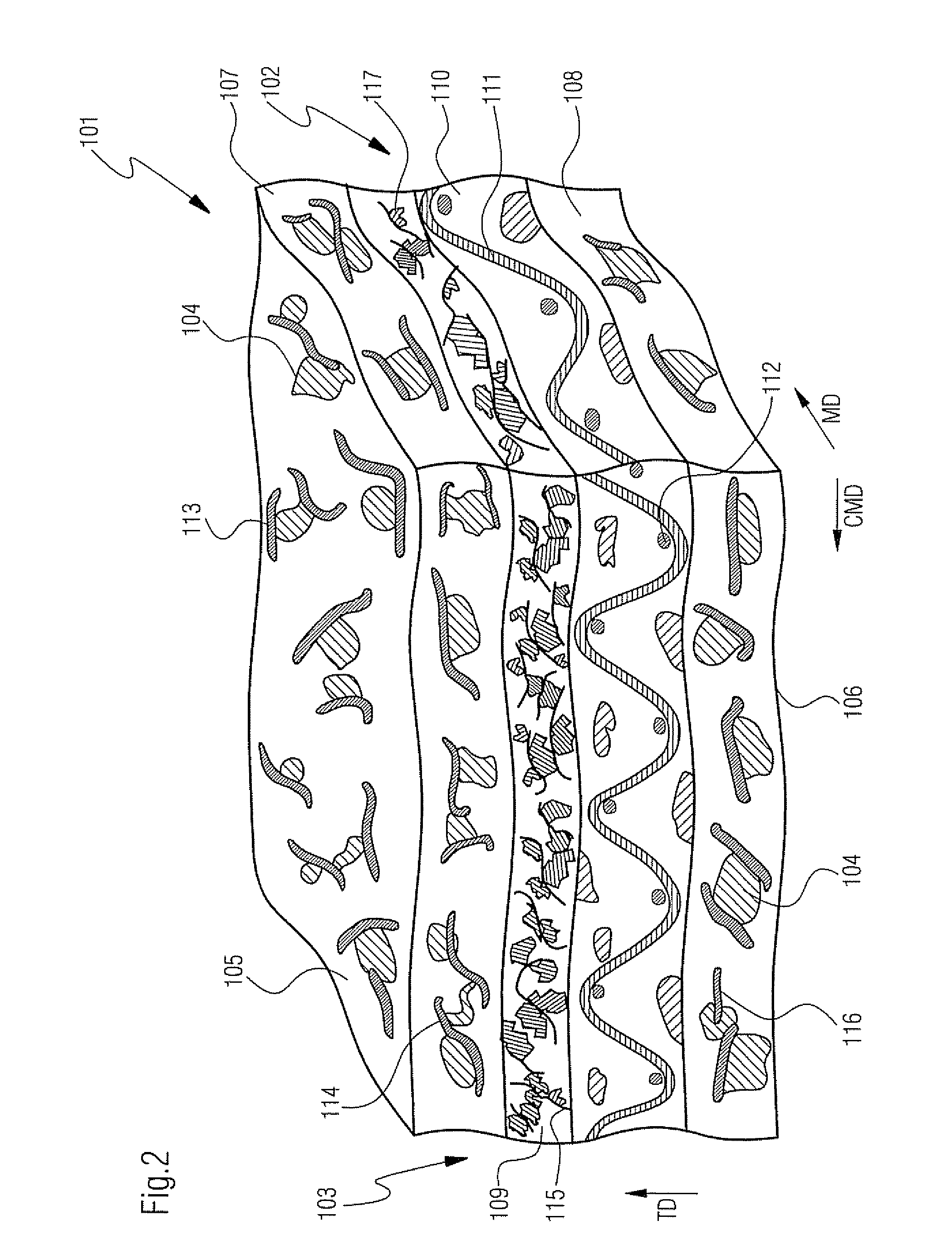Papermaking fabric
a papermaking fabric and fabric technology, applied in the field of papermaking fabrics, can solve the problems of reducing dewatering performance, paper produced on such known fabrics often showing hydraulic marking, and dimensional stability of fabric, so as to improve drainage characteristics, improve dimensional stability, and improve the porosity of composite structures
- Summary
- Abstract
- Description
- Claims
- Application Information
AI Technical Summary
Benefits of technology
Problems solved by technology
Method used
Image
Examples
second embodiment
[0058]Referring now to FIG. 2, there is shown press fabric 101 according to the present invention for use in a papermaking machine. Fabric 101 has porous composite structure 102. Composite structure 102 includes batt fiber structure 103 and particulate polymeric material 104 and 117. Batt fiber structure 103 has upper surface 105 and lower surface 106 extending parallel to upper surface 105 and spaced from upper surface 105 along thickness direction TD extending perpendicular to upper surface 105 and lower surface 106.
[0059]Batt fiber structure 103 includes upper coarse batt layer 107, lower coarse batt layer 108 and intermediate less coarse batt layer 109. Upper coarse batt layer 107 has fibers in the range of approximately 22 to 67 dtex, wherein lower coarse batt layer 108 has fibers in the range of approximately 22 to 44 dtex. Intermediate less coarse batt layer 109 is made from fibers in the range from approximately 3.3 to 11 dtex. Upper coarse batt layer 107 is stacked on top o...
third embodiment
[0067]Referring now to FIG. 3 there is shown press fabric 201 according to the present invention for use in a papermaking machine. Fabric 201 has porous composite structure 202. Composite structure 202 includes batt fiber structure 203 and particulate polymeric material 204. Batt fiber structure 203 has upper surface 205 and lower surface 206 extending parallel to upper surface 205 and spaced from upper surface 205 along thickness direction TD extending perpendicular to upper surface 205 and lower surface 206.
[0068]Batt fiber structure 203 includes upper coarse batt layer 207 and lower less coarse batt layer 209. Upper coarse batt layer 207 has fibers in the range of approximately 22 to 44 dtex, wherein lower less coarse batt layer 209 has fibers in the range of approximately 11 to 22 dtex. Upper coarse batt layer 207 is stacked on top of lower less coarse batt layer 209. Less coarse batt layer 209 is stacked on top of woven base cloth 210, woven from MD and CMD orientated yarns 211...
PUM
| Property | Measurement | Unit |
|---|---|---|
| size | aaaaa | aaaaa |
| size | aaaaa | aaaaa |
| size | aaaaa | aaaaa |
Abstract
Description
Claims
Application Information
 Login to View More
Login to View More - R&D
- Intellectual Property
- Life Sciences
- Materials
- Tech Scout
- Unparalleled Data Quality
- Higher Quality Content
- 60% Fewer Hallucinations
Browse by: Latest US Patents, China's latest patents, Technical Efficacy Thesaurus, Application Domain, Technology Topic, Popular Technical Reports.
© 2025 PatSnap. All rights reserved.Legal|Privacy policy|Modern Slavery Act Transparency Statement|Sitemap|About US| Contact US: help@patsnap.com



